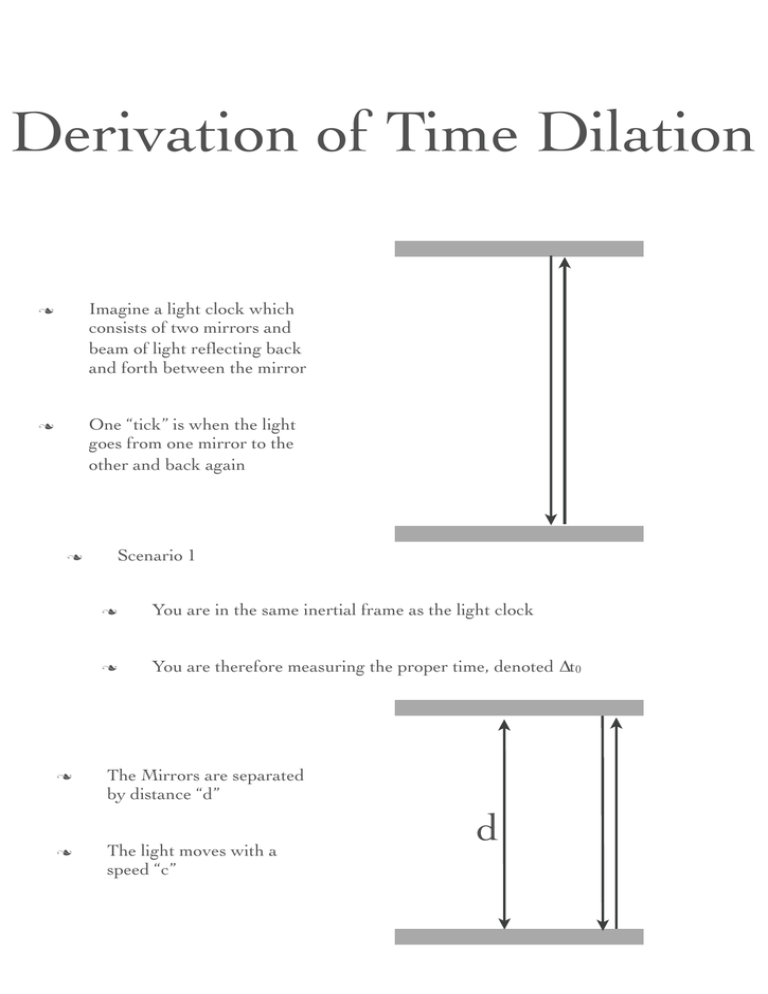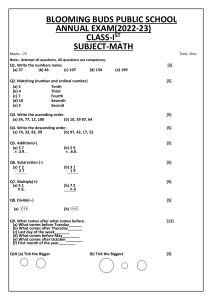Derivation of Time Dilation
advertisement

Derivation of Time Dilation Imagine a light clock which consists of two mirrors and beam of light reflecting back and forth between the mirror n One “tick” is when the light goes from one mirror to the other and back again n Scenario 1 n n n n You are in the same inertial frame as the light clock n You are therefore measuring the proper time, denoted ∆t0 The Mirrors are separated by distance “d” The light moves with a speed “c” d The proper time for one tick is given by: n Scenario 2 n n You are in a different inertial frame to the light clock n The light clock is moving with velocity u ms-1 in the x direction n The path the light takes is now different as it has only a finite speed n The time taken for one tick is denoted ∆t, the observed time u L L d u n n Applying Pythagorus’ theorem the length L is given by: The value for the observed time is: n n n n Combine the two equations above Rearrange the equation for proper time to make “d” the subject of the equation Combine the two equations above This equation can now be solved to make the observed time the subject of the formula n Square both sides and simplify n Collect like terms on the same side of the equation n Factorise the left hand side n n Rearrange to make ∆t the subject of the formula Take the square root of both sides Quod erat demonstrandum




